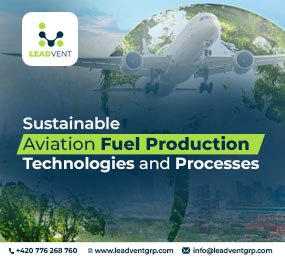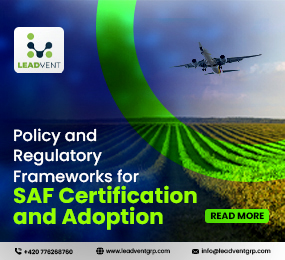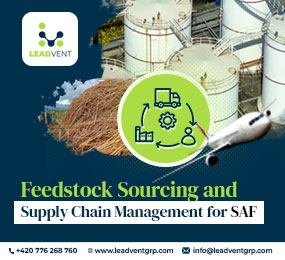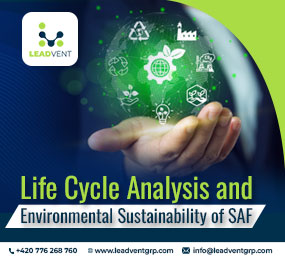Sustainable Aviation Fuel Innovations: A Path Towards Airline Sustainability
The aviation industry is at a pivotal moment in its quest for sustainability. As global awareness of climate change intensifies, the focus on Sustainable Aviation Fuel (SAF) has gained momentum. This innovative fuel offers a promising solution for reducing greenhouse gas emissions, positioning the aviation sector as a key player in the fight against climate change. This article explores recent innovations in SAF, its significance for airline sustainability, and highlights the upcoming aviation conference dedicated to this urgent topic.
Understanding Sustainable Aviation Fuel (SAF)
Sustainable Aviation Fuel is a type of biofuel specifically designed for aviation. It can reduce carbon dioxide emissions by up to 80% compared to traditional fossil fuels. SAF is produced from various feedstocks, including waste oils, fats, and non-food crops, making it a sustainable alternative that does not compete with food production or contribute to deforestation.
Key Innovations in SAF Development
- Advanced Feedstock Utilization: Recent advancements in technology have enabled the use of diverse feedstocks, including agricultural residues and municipal solid waste. This diversification not only enhances sustainability but also addresses waste management issues.
- Carbon Capture Technologies: Innovative processes are being developed to produce SAF synthetically by capturing carbon dioxide directly from the atmosphere. This method promises a closed-loop system where CO2 emissions are recycled into fuel production.
- Certification and Standardization: The aviation industry has established rigorous standards for SAF through organizations like ASTM International. This certification ensures that SAF meets safety and performance requirements equivalent to conventional jet fuel, facilitating its integration into existing fuel infrastructure.
Statistics Highlighting SAF's Impact
- In 2023, SAF production tripled to 600 million liters, representing only 0.2% of global jet fuel use but indicating significant growth potential.
- The International Air Transport Association (IATA) estimates that SAF could contribute to around 65% of the reductions needed for the aviation sector to achieve net-zero emissions by 2050.
- By 2025, regulations will require a minimum blend of 2% SAF in jet fuel, increasing to 70% by 2050 in regions like the European Union.
Case Studies of Successful SAF Implementation
Virgin Atlantic's Milestone Flight
In November 2023, Virgin Atlantic made history by operating the world's first transatlantic flight powered entirely by SAF. This landmark event showcased the viability of SAF at scale and marked a significant step towards decarbonizing long-haul flights.
Alaska Airlines' Commitment
Alaska Airlines has committed to using SAF in its operations, partnering with various producers to ensure a steady supply of this sustainable fuel. The airline aims to reduce its carbon footprint significantly by incorporating SAF into its fuel mix over the next decade.
The Role of Aviation Forums and Conferences
The World Sustainable Aviation Fuel Forum, scheduled for early 2025, will serve as a pivotal platform for stakeholders in the aviation industry to discuss advancements in SAF technology and policy frameworks. This aviation conference will bring together industry leaders, policymakers, researchers, and innovators to share insights and foster collaboration aimed at accelerating the adoption of sustainable fuels.
Key Themes of the Forum
- Innovation Sharing: Attendees will explore breakthrough technologies and sustainable practices driving SAF production.
- Regulatory Frameworks: Discussions will focus on how global policies can support the scaling up of SAF production.
- Networking Opportunities: The forum will facilitate connections between industry professionals and stakeholders committed to advancing airline sustainability through SAF.
Frequently Asked Questions (FAQs)
What is Sustainable Aviation Fuel (SAF)?
SAF is an alternative jet fuel derived from sustainable feedstocks that can significantly reduce greenhouse gas emissions compared to traditional fossil fuels.
How does SAF contribute to airline sustainability?
By utilizing renewable resources and reducing lifecycle carbon emissions by up to 80%, SAF plays a crucial role in helping airlines meet their sustainability goals.
What are the challenges facing SAF adoption?
Key challenges include high production costs, limited feedstock availability, and the need for supportive regulatory frameworks to incentivize investment in SAF technologies.
Conclusion
The innovations surrounding Sustainable Aviation Fuel represent a significant advancement towards achieving airline sustainability goals. As airlines increasingly recognize their environmental responsibilities, events like the aviation forum will be vital for fostering collaboration and sharing knowledge among stakeholders committed to decarbonizing aviation. With ongoing advancements in technology and supportive policies, the future of aviation may very well be powered by sustainable fuels that not only reduce emissions but also pave the way for a greener planet.











